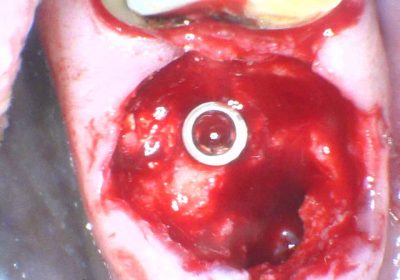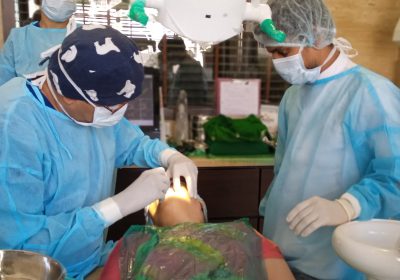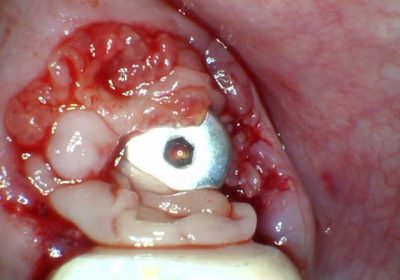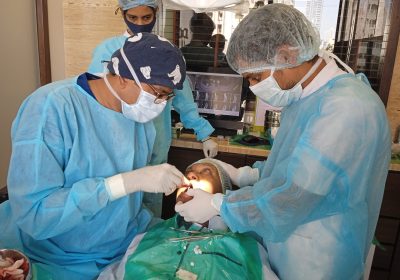Immediate Implant in Upper Jaw Molar with Sinus Lift Surgery
Immediate upper molar extraction with sinus lift surgery is a complex dental procedure that is typically performed when a patient has a compromised upper molar and there is insufficient bone height in the posterior maxilla to support dental implants. Here are some key points to consider about this procedure: 1. **Indications**: This procedure is indicated when a patient has a non-restorable upper molar and wishes to replace it with a dental implant. Additionally, there must be inadequate bone height in the maxillary sinus area to accommodate the implant. 2. **Diagnostic Imaging**: Prior to the procedure, comprehensive diagnostic imaging such as CBCT (Cone Beam Computed Tomography) scans are essential to assess the condition of the tooth, the bone quality and quantity, and the position of the maxillary sinus. 3. **Extraction**: The compromised upper molar is first extracted. This is often followed by socket preservation techniques to maintain as much bone volume as possible. 4. **Sinus Lift**: The sinus lift, also known as a sinus augmentation, is the process of elevating the sinus membrane and adding bone graft material to increase the height of the bone in the posterior maxilla. This is necessary to create enough space for the dental implant. 5. **Bone Grafting**: Various bone graft materials may be used, including autogenous bone from the patient's own body, allografts (from a donor), xenografts (from animals), or synthetic materials. The choice of graft material depends on the patient's needs and the surgeon's preference. 6. **Healing Time**: After the sinus lift and bone grafting, a healing period is required to allow the graft to integrate with the patient's natural bone. This can typically take several months. 7. **Implant Placement**: Once the graft has integrated and there is sufficient bone height, the dental implant can be placed in the augmented area. This is usually performed in a separate surgical procedure. 8. **Osseointegration**: After implant placement, a period of osseointegration is needed, during which the implant fuses with the surrounding bone. This usually takes several months. 9. **Prosthetic Phase**: Once the implant has been integrated, an abutment and a crown can be attached to the implant, restoring function and aesthetics to the patient's smile. 10. **Success Rate**: Success rates for immediate upper molar extraction with sinus lift surgery are generally high when performed by experienced oral surgeons and when patients follow post-operative care instructions diligently. 11. **Potential Complications**: Like any surgical procedure, there are potential risks and complications, including infection, graft failure, implant failure, sinusitis, and nerve damage. Patients should be informed about these risks. 12. **Patient Care**: Patients should be educated about post-operative care, including proper oral hygiene, diet restrictions, and follow-up appointments to monitor healing and ensure the long-term success of the procedure. 13. **Cost Considerations**: This procedure can be costly due to the need for multiple surgeries, graft materials, and dental implants. Patients should discuss financial aspects with their dentist or oral surgeon. It's essential for patients considering immediate upper molar extraction with sinus lift surgery to consult with a skilled oral surgeon or periodontist to determine if they are suitable candidates for the procedure and to discuss the details, risks, and potential benefits specific to their case. Immediate Implants are standard practice in our office. A patient visits us with an abscess in the upper molar. The tooth was extracted with conservative techniques. The Bone in between the roots was carefully preserved. Sinus Lift Surgery was done using Bone expansion techniques with Densah Burs; Implant was inserted at the time of extraction. Bone Augmentation was done to fill the gaps in the extraction socket. The results are just fantastic. Time, Money, and Surgery are minimized.




